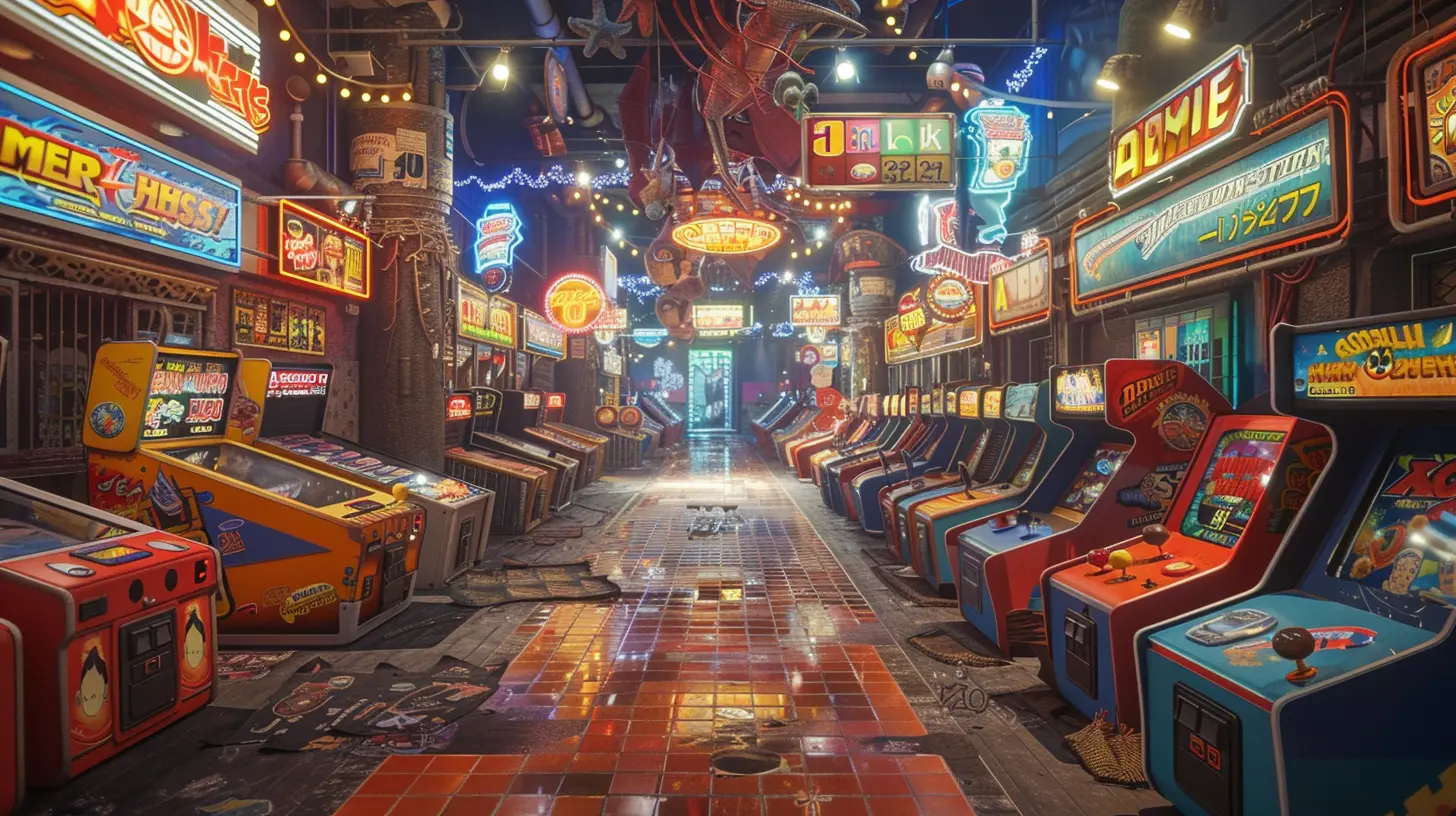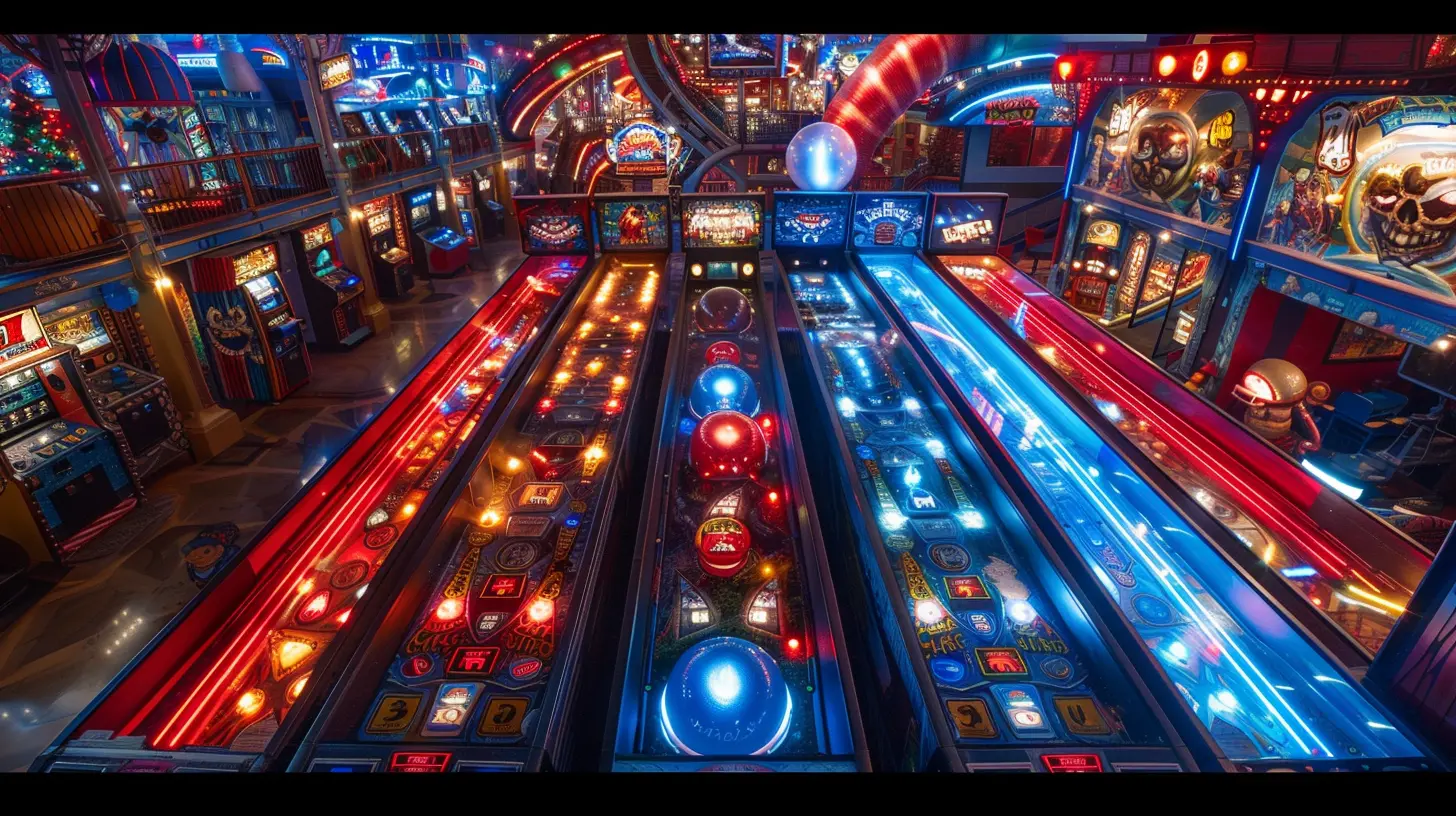High Scores and Heart Races: What Makes Arcade Games Addictive
24 July 2025
Ah, the arcade. That dark-lit neon dreamland filled with thuds of joysticks, pixelated screams, and the sweet sound of coins being swallowed faster than your dignity during a Dance Dance Revolution fail. Whether you're a die-hard retro fan or someone who just can't walk past a claw machine without giving it a go (even though it never, ever works), you’ve got to admit—arcade games are magnetic.
But why? What voodoo spell do they cast that makes us trade our hard-earned cash for a chance to light up a leaderboard or beat our best time by 0.01 seconds? Let’s dive into the pixelated brain-hacking wizardry behind this madness. Get ready—as the high scores climb, so do our heart rates.
The Holy Trinity: Lights, Sounds, and Nostalgia
Let’s be honest: if Las Vegas and a Saturday morning cartoon had a lovechild, it would look a lot like your favorite arcade cabinet. Bright lights? Check. Retro sound effects that go boop-beep every time you sneeze? Oh, definitely. A fuzzy wave of nostalgia so thick it could be marketed as a candle scent? Absolutely.Arcade games know how to grab your senses by the collar and shake them aggressively (but with affection). You’re surrounded by visual chaos, digital mayhem, and audio cues that make your brain light up like a Christmas tree. And it's not just about the aesthetics; there's science behind this sensory overload.
Every beep and blink sends dopamine signals to your brain, and bam—you’re hooked. Who needs drugs when you’ve got Galaga, am I right?
Fast-Paced Gameplay: Blinking Is Optional
You’re playing Street Fighter II. Your opponent is on their last legs, you’re down to a sliver of health, and one wrong move means humiliation from a 12-year-old standing behind you holding a slushie. You don’t blink. You don’t breathe. You mash buttons like your life depends on it. Victory. You feel like a god.Arcade games are built for speed. Quick rounds, instant feedback, and adrenaline-pumping action. Unlike AAA console games that require a 40-hour commitment and a small blood sacrifice, arcade games give you action NOW. You don’t need a backstory. You don’t need a tutorial. You need a quarter and fast reflexes.
This rapid-fire gameplay is addictive because there's no downtime. Fail? Try again. Succeed? Try again—harder. The loop is short, punchy, and oh-so-satisfying.
The Chase for the High Score: Bragging Rights Are Everything
Let’s talk about the real prize here: the high score screen. Getting your initials (or, let’s face it, a mildly inappropriate three-letter combo) on that glowing leaderboard is the ultimate flex. Who cares about saving princesses or unlocking alternate endings? The real goal is walking away from that machine with your name etched in eternal glory.There’s a primal appeal in chasing points. It taps into our competitive spirit, gives us an arbitrary goal to obsess over, and feeds our need to be "just slightly better" than everyone else. Even if it's by a single, glorious point.
And don’t think this kind of competition ends at the arcade. Even mobile games today replicate this leaderboard madness. Candy Crusher or Fruit Ninja, it’s all just the same arcade fix in a new digital disguise.
Coins, Lives, and That One More Game Syndrome
Arcade machines are masters of manipulation. Seriously. They’ve got PhDs in psychological trickery.Let’s say you lose. You were so close to the final boss, only to get wrecked by some flying pixel nightmare. But wait—you’ve got "INSERT COIN TO CONTINUE" blinking on the screen. You hesitate. You think. You “accidentally” insert another coin because hey, you were so close.
And so the cycle begins.
Arcade games are like bad dates that promise they’ve really changed this time. They dangle hope like a carrot, giving you just enough success to keep you coming back, while punishing you just enough to make you try again. It’s the classic “one more try” mindset—and it’s addictive as heck.
Easy to Learn, Hard to Master: Welcome to the Skill Curve
Ever played Pac-Man for the first time and thought, “This is easy!” only to die a humiliating death about 27 seconds later? Yeah. That’s by design.Arcade games lure you in with simple mechanics. One joystick, maybe one or two buttons. You’re fooled into thinking you’ve mastered it. But then—BOOM—you get introduced to level 3, where suddenly every enemy is faster, smarter, and totally out to ruin your life.
This steep skill curve is a major part of the addiction. Progress feels earned. Improvement is tangible. And every failure? It’s not the game’s fault—it’s yours. So you try again. And again. And again.
Eventually, it’s not about beating the game. It’s about beating your past self. You vs. you. And that competition? It’s dangerously compelling.
The Social Factor: Trash Talk and Token Wars
Arcades are very much a social playground. You're not just fighting AI zombies or racing a CPU-controlled car—you're doing it while someone watches, waiting for you to fail so they can take your spot.That’s pressure.
But it’s also what makes arcades so thrilling. You’ve got an audience, a rival, maybe even a nemesis. You engage in casual trash talk that escalates to full-blown rivalries. You lose a game, and your friend takes over, smirking like an action movie villain. Cue dramatic music.
Every session turns into an event. And the social element just adds fuel to the addiction fire. After all, what's the point of a high score if there's no one around to envy you for it?
Visual Feedback: The Flashier, The Better
Ever noticed how arcade games go full Michael Bay every time you do something right? Get a bonus? The screen explodes with fireworks. Win a level? Cue the digital fanfare. Even selecting “Start Game” is treated like a blockbuster moment.This insane level of positive feedback tells your brain: “Hey! You’re awesome! Keep doing that!”
The game flatters you. It rewards even the smallest victories with blinking lights and victory chimes. It's like getting a parade for tying your shoelaces. And because we’re simple, emotional creatures who love attention—it works. That visual celebration is a dopamine jackpot, and once you cash in, you’ll want more.
Micro Sessions With Macro Impact
Arcade games are short. That’s the point. Most games don’t expect you to sit for hours—they want your quarter, your focus, and about 90 seconds of your life.But those 90 seconds? They can pack more intensity than an entire season of your favorite Netflix drama. They’re short hits of adrenaline, perfectly suited for today's goldfish-level attention spans.
The beauty of short sessions is that they make the game repeatable. It's like potato chips—you never eat just one. And arcade titles milk that for all it's worth.
Tapping into FOMO (Fear of Missing Out)
Let’s say your friend just played a flawless game of Time Crisis in front of 10 people. Everyone claps (yes, actual claps in an arcade—rare, but it happens). You’re suddenly filled with a mix of admiration and boiling jealousy. How dare they?So what do you do? That’s right. You step up. You have to play. The FOMO is real, and arcade games play you like a fiddle.
When you see someone crush a game, you want to experience that rush too. You want your moment. And so you play. Even if you had no intention of spending your last few tokens five minutes ago, here you are, in the line of fire. FOMO strikes again.
Nostalgia: The Most Addictive Drug of All
Let’s be real. A huge chunk of arcade addiction isn’t even logical—it’s emotional. Many of us grew up on these machines. We remember the smell of pizza and sweat, the oddly sticky joysticks, and the thrill of winning a cheap plastic prize worth approximately half a cent.Arcade games are a time machine. They teleport us back to a simpler era—before DLC, microtransactions, and 80GB updates. A time when you could walk into a game center with five bucks and feel like a king.
And tapping into that nostalgia? Instant emotional high. It’s less about the mechanics and more about the memories. No wonder we keep coming back.
Conclusion: We’re All Just Token-Pumping Junkies (And That’s Okay)
So, what makes arcade games addictive? It's a cocktail of flashing lights, quick hits of dopamine, fierce competition, and the sweet, sweet taste of nostalgia. They’re engineered to mess with your brain in the best (and maybe worst) possible ways.But hey, there are worse addictions than passionately pursuing domination in a 30-year-old pixelated space shooter. So grab your tokens, flex those fingers, and remember: the leaderboard isn’t going to climb itself.
all images in this post were generated using AI tools
Category:
Arcade GamesAuthor:

Greyson McVeigh
Discussion
rate this article
1 comments
Faye Webster
Arcade games: where ‘just one more game’ turns into a five-hour marathon, your heart races from the thrill, and your thumbs get their own workout! Fat thumbs, fit spirit!
August 28, 2025 at 3:17 PM

Greyson McVeigh
Absolutely! The thrill of the game and the challenge of achieving high scores make arcade gaming an irresistible marathon. It's all about that adrenaline rush!


